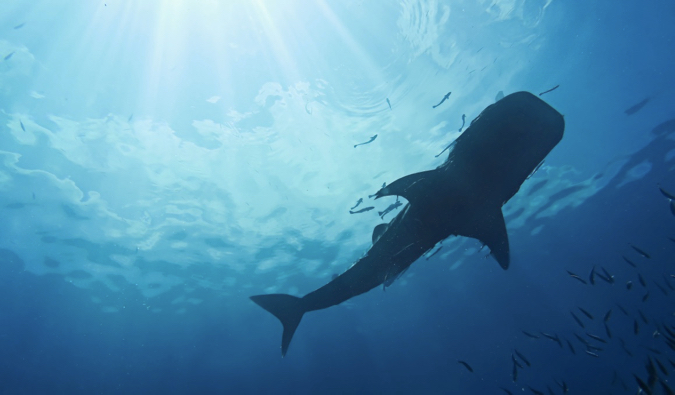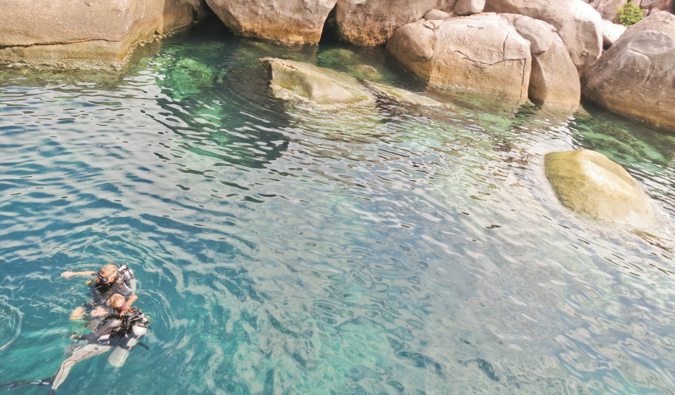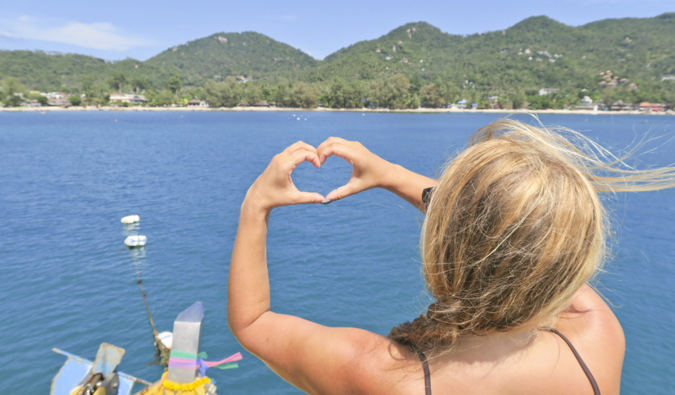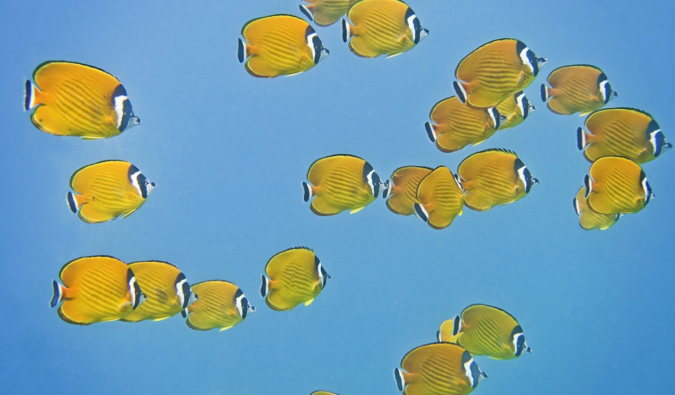
Posted: 2/15/2020 / February 15th, 2020
Thailand is an English teacher’s dream. With a low cost of living, incredible food, rich culture, plenty of partying, and a mai pen rai (no worries) attitude, the Land of Smiles is a very popular country for English teachers.
For Thais, English is considered a necessity to work in the global market, so there is always a need for teachers. With language schools, primary schools, universities, and other locations offering English classes, there are numerous avenues for employment.
So, how do you get a job teaching English in Thailand?
In order to do so, you need to be a native speaker from an English-speaking country (defined as the US, Canada, the UK, Ireland, Australia, and New Zealand) or prove your fluency, and have a bachelor’s degree.
Because of the popularity of teaching English in Thailand, I’d recommend also having a 120-hour TEFL, TESOL, or CELTA certificate to make you more competitive.
With all teaching opportunities in Thailand, salaries vary greatly depending on the location and employer. In hot tourist destinations like Koh Samui, Phuket, and other spots, expect to earn less than what you would make in less exotic locales, because people will accept a lower salary in exchange for the beach lifestyle.
You will earn the most in Bangkok, followed by Chiang Mai.
Here’s a breakdown of the various ways to teach in the country and what to expect with each position:
Public Schools
Public schools are free from preschool through high school. The school year begins in May and ends in March and includes a three-week break in October.
As a public school teacher in Thailand, expect to work full-time, even if you’re not teaching every moment of the day. Responsibilities range from creating lesson plans and exams to grading papers (none of which you are compensated for if it’s on your own time), as well as keeping office hours at school.
Students range in their knowledge and understanding of English, and often there is little guidance in terms of the curriculum you need to create. You’re basically on your own here! Many teachers incorporate games, television shows, and movies into their classes.
In public schools, the student-to-teacher ratio is high, so expect large class sizes.
Salaries range from 25,000 to 40,000 THB ($827–1,317 USD) a month. Teaching in the cities will earn you the most money. You can expect lower salaries in the countryside, but cost of living is so cheap there, you’ll still end up having plenty of extra money!

Private and International Schools
There are very few differences between public schools and private and international schools, other than the lower student-to-teacher ratio and the fact that salaries are significantly higher since they are not free to attend.
International schools have the most coveted positions, but you’ll need to be an actual certified teacher to get one of them, as the curriculum follows the West’s. Private schools are a little less strict, but you’ll still want to have some experience. You’ll need to have not only a degree but also a TEFL, TESOL, or CELTA certificate and prior teaching experience, and be a native English speaker.
If you’ve never taught English before or have only a little experience, you’re unlikely to get a job at one of these schools.
Whereas the public schools follow the Thai system and come with little support, these institutions tend to be more like Western schools, so if you’re wondering what teaching is like there, just think back to what it was like when you went to school!
International schools pay the most, roughly 80,000–170,000 THB ($2,633–5,596 USD) a month (which is well above the typical Thai salary and allows for your lifestyle to be more lavish); private schools pay 60,000–80,000 THB ($1,975–2,633 USD).
These positions also come with a lot of perks: contract bonuses, lots of vacation days, health insurance, and sometimes airfare to and from Thailand.
Universities
Teaching at a university in Thailand can help give you an edge over the competition for other English teaching jobs in the country. But teaching at a university means teaching part-time and earning only 30,000–60,000 THB ($987–1,975 USD) a month.
The upside is that you can also teach at another school part-time, you get a few months of paid vacation, and you are compensated generously should you have to work overtime (about 1,000–1,500 THB, or $33–49 USD, an hour).
Depending on where you teach, your responsibilities will be different. All teachers must come up with lesson plans, but some may also have to teach faculty or have additional sessions outside of the classroom, among other duties.
You may or may not have textbooks to use for your curriculum. Class sizes at universities are notoriously large, about 50 students.
Language Schools
Teaching English at a language school in Thailand is different than at a public or private school. Classes are normally held in the morning before the workday starts to accommodate businesspeople, then again in the afternoon and into the evening for children and adults.
The workweek at language schools extends into the weekend.
At language schools, classes are small and range from four to ten students. As a teacher, it’s your responsibility to come up with lesson plans and activities.
There’s also the option at language schools to work full- or part-time. Full-time teachers make anywhere from 30,000 to 40,000 THB ($987-1,316 USD) per month; part-time teachers make 350–500 THB ($11.50–16.50 UD) per hour.
There are lots and lots of language schools in the country, and jobs are fairly easy to get. They don’t really care about previous experience or even if you have a TEFL certificate (though having both makes it easier to get a job).
You’ll also get very little support from the schools and will basically have to set up everything on your own. You’ll only get paid for actual classroom time.
I didn’t really love teaching at the language schools, but the work was easy even if it was not well paid.
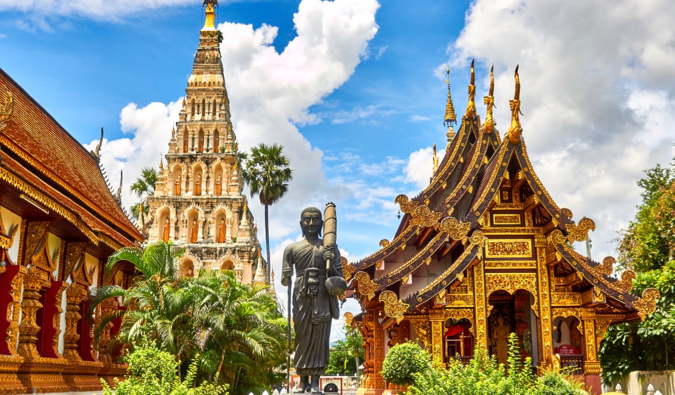
Corporate Training Programs
As a corporate teacher, you teach from a company’s office, giving lessons to their staff. Classes tend to be large, so many employees can attend. Because these programs are quite expensive, the positions are only filled by teachers with experience.
Expect to work during the morning or late at night, as you have to teach people outside business hours.
Corporate teachers make anywhere from 45,000 to 60,000 THB ($1,481–1,974 USD) a month, and it’s normal for the school to cover travel expenses to the company.
Test Preparation
Test preparation in Thailand is different than in other English positions. You must be knowledgeable in a variety of English tests, including SAT or GRE prep (and have finished in the 95th percentile or above), as well as IELTS and TOEIC, both of which are used to test students before they work or study abroad.
As a test prep teacher, classes are either groups or private and take place on both weekdays and weekends. It’s your job to not only teach the courses but also design and develop the course curriculum.
Test prep teachers average about 600 THB ($20 USD) an hour.
Best Job Resources for Teaching in Thailand
There are numerous sites to find jobs teaching English in Thailand. The best one for jobs is ajarn.com as it simply has the most listings and is specific to Thailand. It’s the oldest teaching in Thailand website too.
Other sites with job postings include the following:
How to Apply for a Visa
It isn’t hard to apply for the Non-Immigrant B visa necessary to teach English in Thailand and your school will help you do, but there are quite a few steps to getting it and then starting teaching.
First, make sure your passport has validity beyond six months and have passport photos for applications, as well as your original bachelor’s degree, transcripts, and a certified criminal background check.
Next, you’ll need to apply for a visa from outside of Thailand and include a letter from your employer with the job offer. Once you have your visa, your employer steps in and handles the paperwork, completing the remainder of the application on your behalf.
After the visa is complete, you’ll need to have a physical exam and a medical certificate from a Thai doctor and then get your work permit. From there, it’s on to the Immigration Department in order to extend your visa in your passport for 12 months.
The last two steps are to get your tax card from the Tax Department and then your teaching license. Your employer should be able to assist you in all aspects of the process.
It’s important to note that if you choose to teach without these necessary items, you run the risk of getting kicked out of the country and fined.
Teaching English in Thailand is one of the best teaching opportunities in the world, thanks to the country’s cost of living, tropical environment, and laid-back lifestyle.
With so many options for teaching and the ease of getting a visa, it’s a perfect spot to start your English teaching career abroad.
P.S. – Want to meet other travelers in real life? This year we launched The Nomadic Network, a platform created to help travelers connect, learn, and get inspired in real life! Here are our upcoming events if you want to take part: Seattle (2/17), Austin (2/18), Fort Lauderdale (2/19), Portland (2/19), San Francisco (2/20), Los Angeles (2/23), Detroit (2/24), Boston (2/24), Dublin (2/24), San Diego (2/24), London (2/25), Chicago (2/25), and NYC (3/10).
Ready to Teach Overseas? Get My Comprehensive Guide
 This digital guide will put you ahead of your competition, help you land a high-paying job with a reputable company, and give you first-hand knowledge from real teachers! Get started today with this downloadable PDF (for your computer, e-reader, or mobile device) with the book PLUS 12 interviews about life as a teacher, plus job advice from one of the industry’s top recruiters!
This digital guide will put you ahead of your competition, help you land a high-paying job with a reputable company, and give you first-hand knowledge from real teachers! Get started today with this downloadable PDF (for your computer, e-reader, or mobile device) with the book PLUS 12 interviews about life as a teacher, plus job advice from one of the industry’s top recruiters!
Book Your Trip to Thailand: Logistical Tips and Tricks
Book Your Flight
Find a cheap flight by using Skyscanner or Momondo. They are my two favorite search engines because they search websites and airlines around the globe so you always know no stone is left unturned.
Book Your Accommodation
You can book your hostel with Hostelworld. If you want to stay elsewhere, use Booking.com as they consistently return the cheapest rates for guesthouses and cheap hotels.
Don’t Forget Travel Insurance
Travel insurance will protect you against illness, injury, theft, and cancellations. It’s comprehensive protection in case anything goes wrong. I never go on a trip without it as I’ve had to use it many times in the past. I’ve been using World Nomads for ten years. My favorite companies that offer the best service and value are:
- World Nomads (for everyone below 70)
- Insure My Trip (for those over 70)
Looking for the best companies to save money with?
Check out my resource page for the best companies to use when you travel! I list all the ones I use to save money when I travel – and I think will help you too!
Looking for more information on visiting Thailand?
Check out my in-depth destination guide to Thailand with more tips on what to see, do, costs, ways to save, and much, much more!
The post The Ultimate Guide to Teaching English in Thailand appeared first on Nomadic Matt's Travel Site.

 Updated: 8/22/2019 | August 22nd, 2019
Updated: 8/22/2019 | August 22nd, 2019